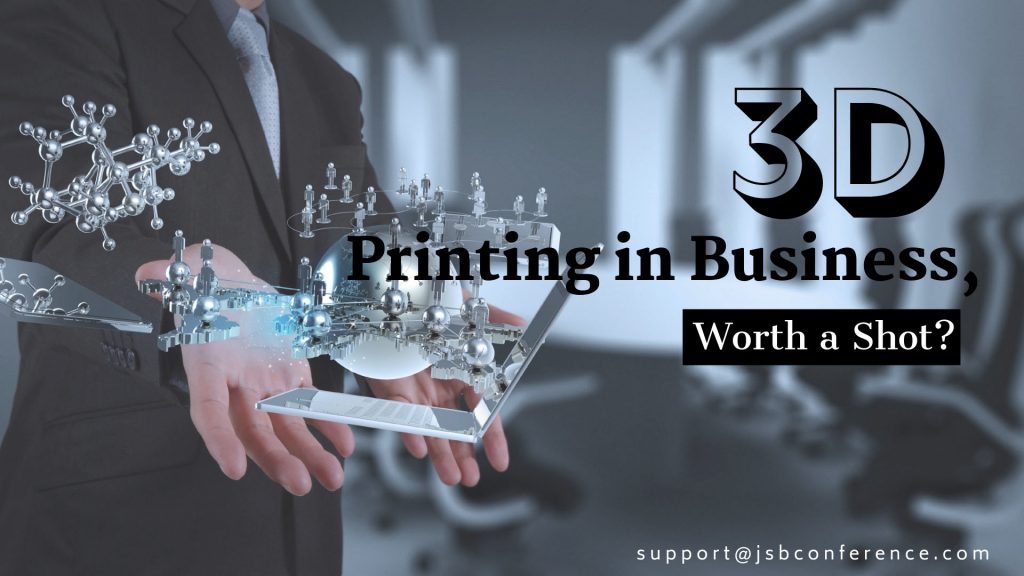
3D Printing In Business, Worth A Shot?
The current effects of 3d printing, known as additive manufacturing are vast on the business grounds. It is a process of making three-dimensional model data, which is furthered layered. This is in pure contrast with the effect of subtractive manufacturing technologies where a large block of materials is removed selectively. 3D Printing conference in the Netherlands, USA put forward the game-changing aspects in the manufacturing industries.
The overall process Of 3D printing in Manufacturing
The major systems of additive manufacturing have been using the digital blueprint created by the 3D computer-aided design software, acronym as CAD. The process of Additive manufacturing can further produce varied complex shapes and structures that cannot be easily produced with a traditional machining method. In the process of 3D printing, further, there are eight primary additive manufacturing technologies which are being implemented. Each of these uses a different build-up of materials which can range from plastics to metal alloys.
The cheapest form of technology in the recent domain is the use of Material Extrusion, in which the build in a material is the use of plastics. This practice is at times considered vague in response to technologies and high printing precision materials.
How has it affected!
In recent times, the use of 3D printing is not totally a replacement for the volume of manufacturing. The reason being the technology and manufacturing materials are costing more than that of other manufacturing approaches. Altogether, there is more widely used prototyping in a number of sectors which are lowering the cost of development further. In recent times even the use of 3D printing is showing its presence in the aerospace domain, which is a base ground to changing economics, further created with manufacturing of precision components. In a string of technological advancements, the use of 3D printing has been explored around contexts of medicine and construction.
The future!
Amid the next three to five years, 3D printing will take a major impact. The current market in the field of additive manufacturing has seen a constant steady growth scale. This growth has although attributed less than the personal or desktop systems. Thus, the industry has been not posing any immediate threat in the traditional manufacturing industries, but the change is more likely to be in gradual than the revolutionary phase. The current evidence shows the early adoption of 3D printing technologies being the advancement of industries, with a significant disruption process.
The current biggies hitting the 3D printing domain.
The use of new materials.
The use of research and development is increasing with varied ideas with printing materials continuing to gather information. The metallic 3D printing is further lowering the cost and effectiveness is increased. Cemented carbide is a carbon compound being used which is mainly made up of carbide bound together along the binder metal. This has been developed in Germany, and it can be printed using the blinder jetting and further produce objects which are strong and high in durability.
The use of industrial 3D printing goes up
HP being a new entrant in the industrial printing segment, there is a stronghold of 3D printing platforms in form factor and the aspect of the hardware being prescribed. The objective of the process is to greatly increase the speed of custom parts in printing, which can create the possibility of the standard part of manufacturing for the consumer electronics domain, and further high volume of engineering.
4th International Conference on Advances in 3D Printing & Modeling
The 4th International conference is scheduled to take place in Amsterdam, Netherlands. It is a linking domain of various experts who attend the 3D printing and modeling conference. Accompanied by Research Scientists, Students, Academic Faculty, Design Engineers, Mechanical engineers, Industrial engineers, Aerospace engineers, Architects, the conference aims at providing adequate knowledge on the 3D printing aspects on a wider scale.